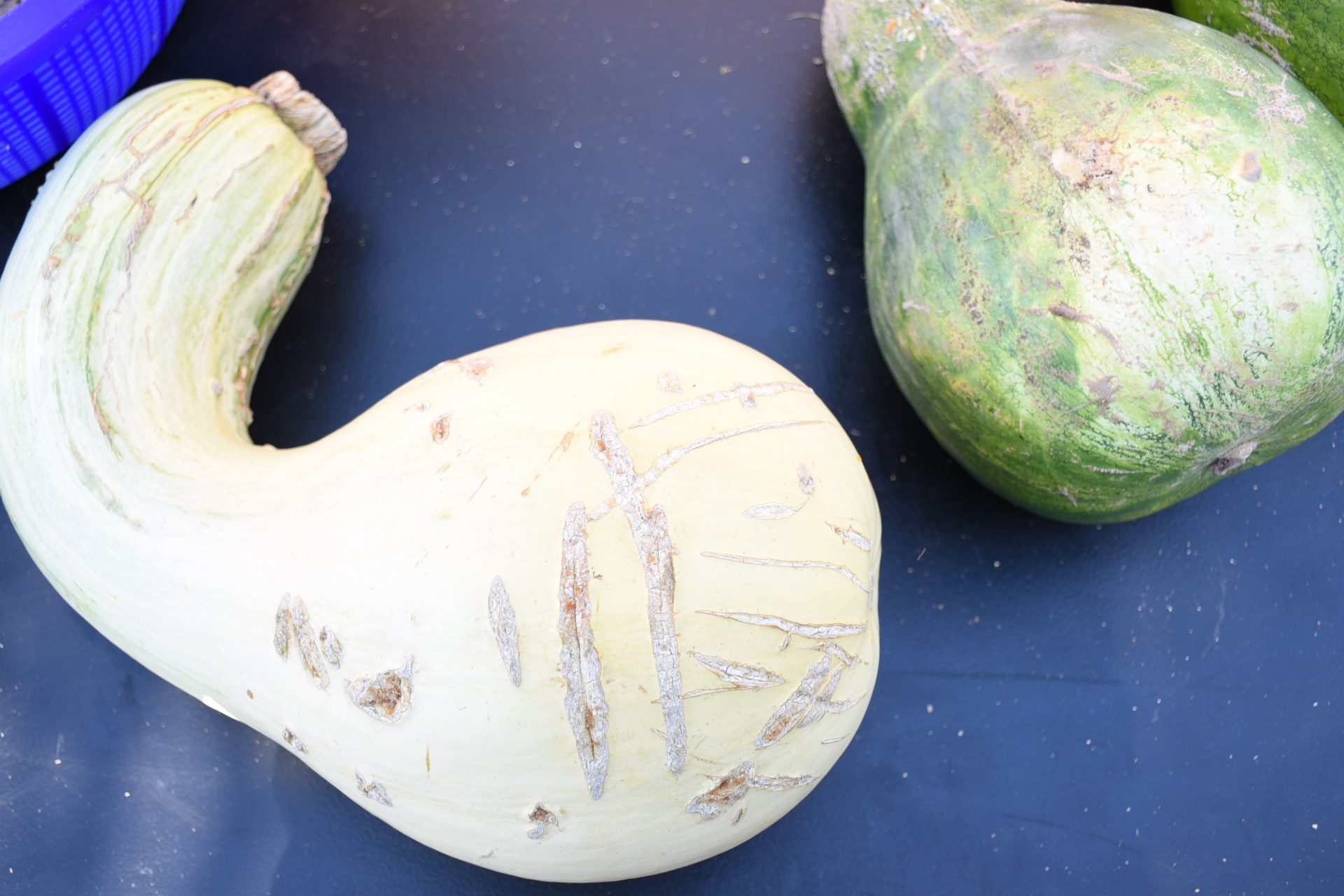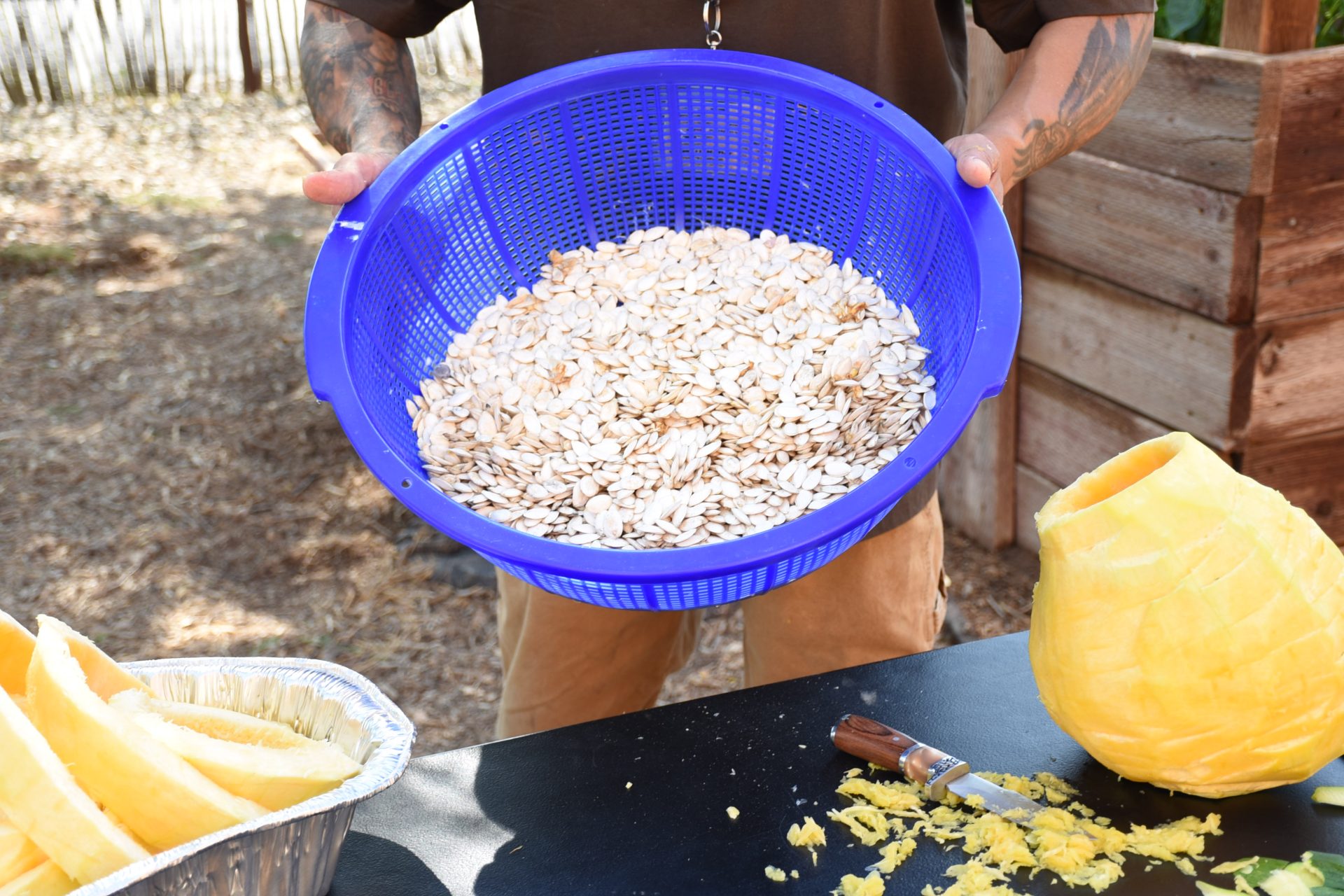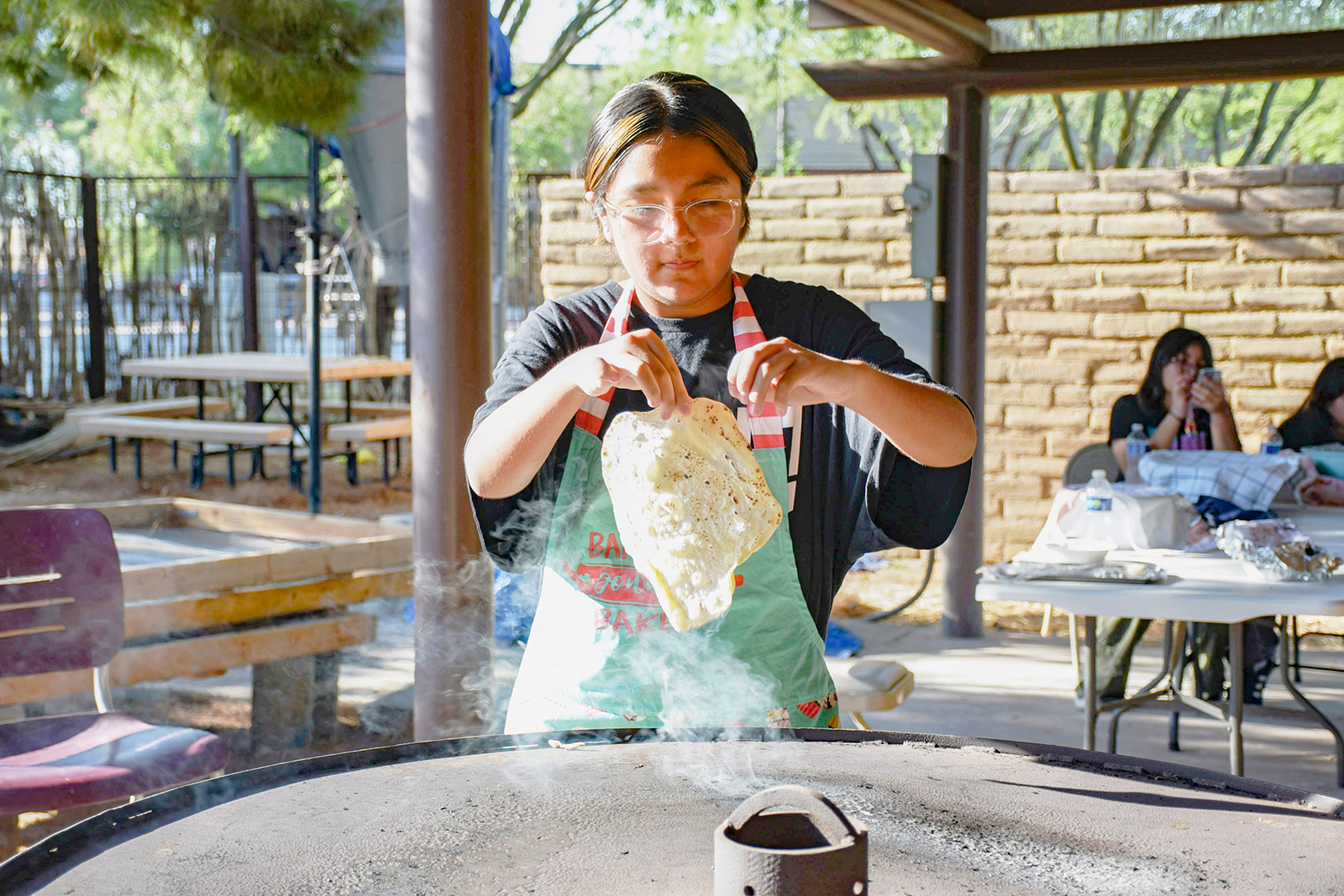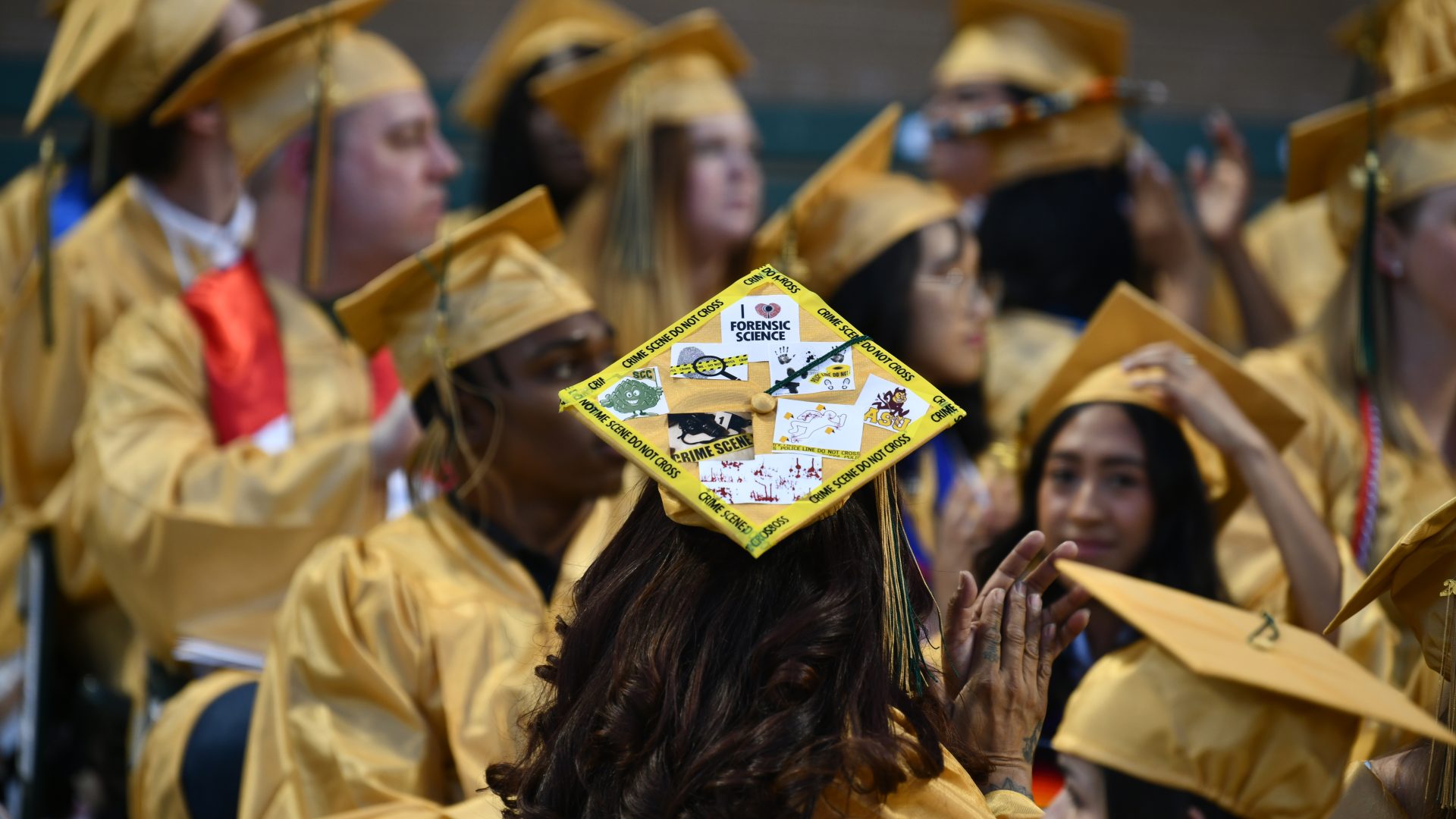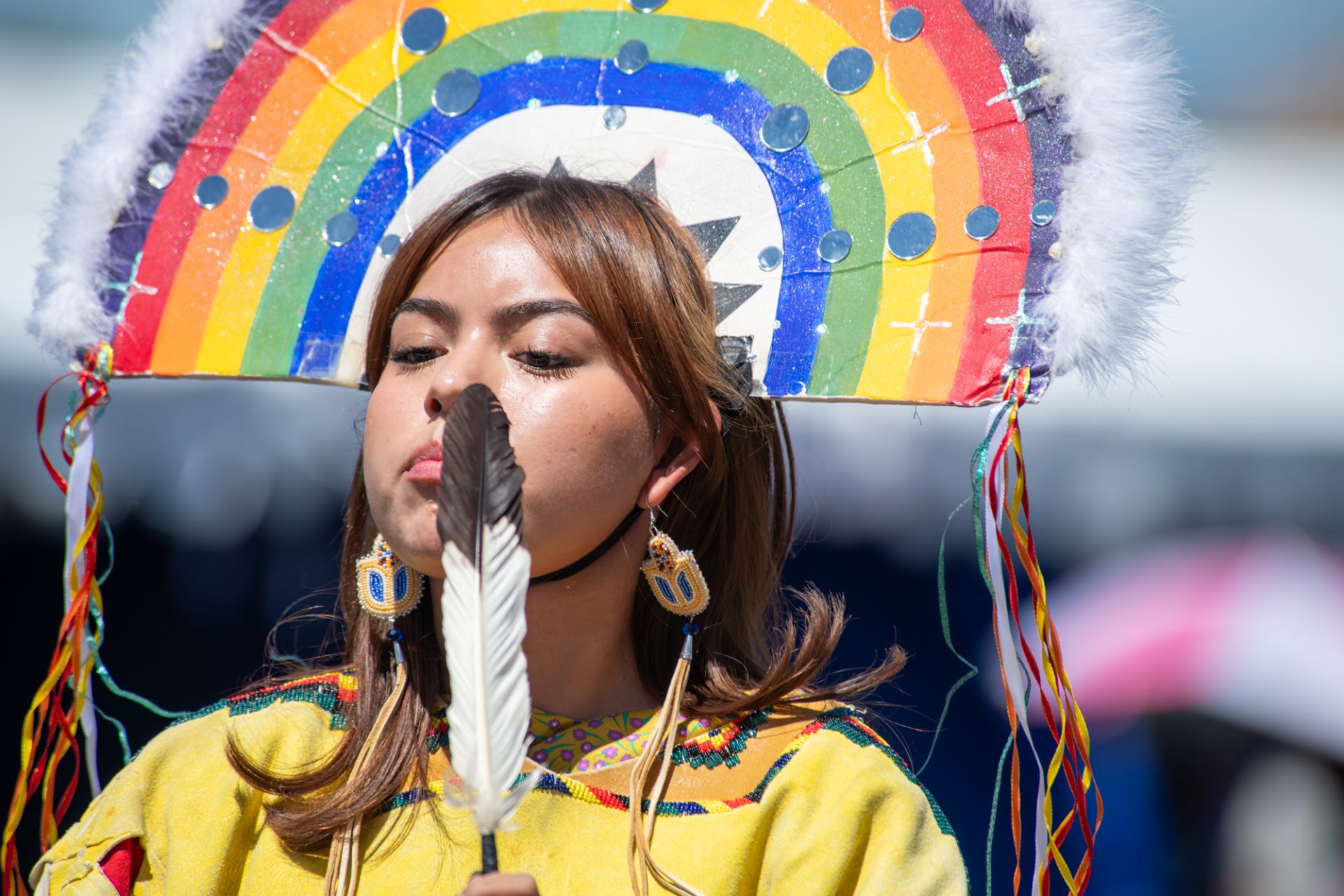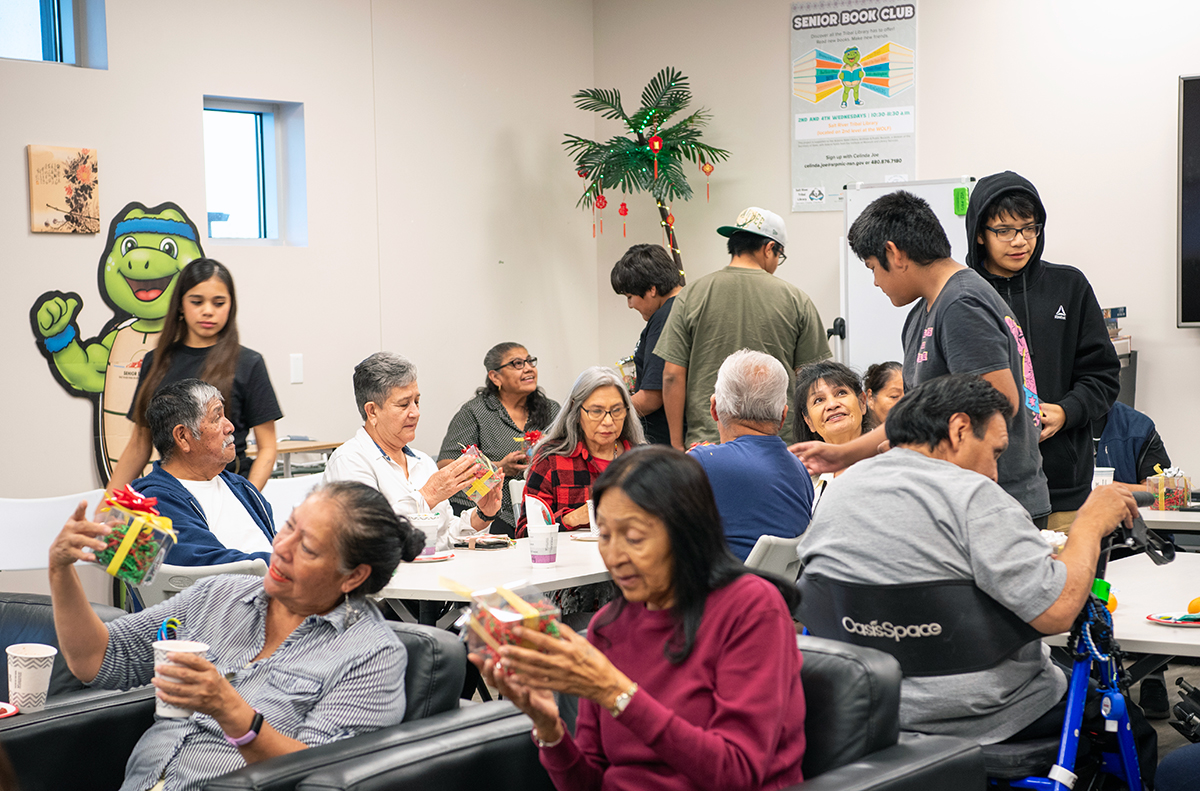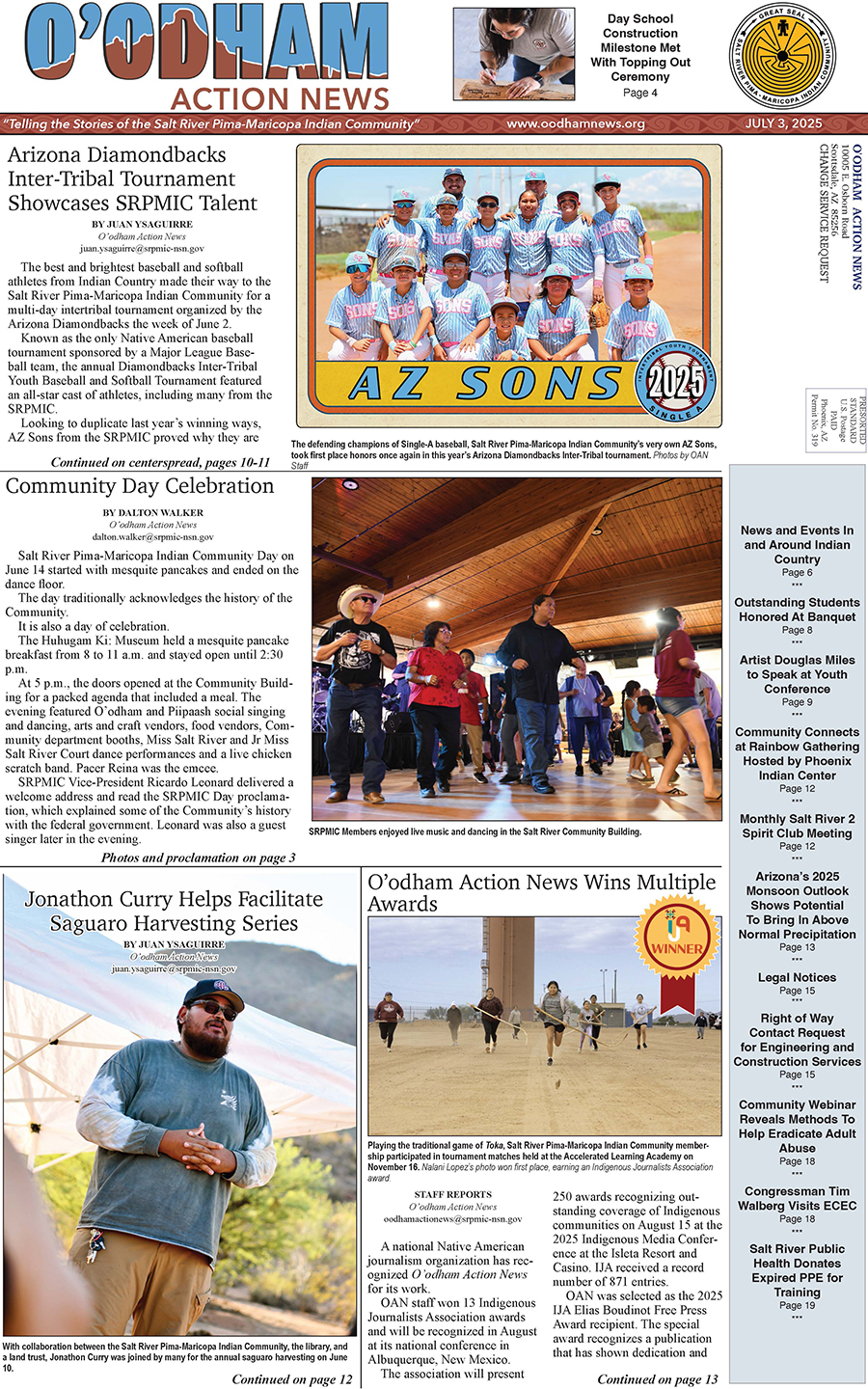VIEWS: 796
August 14, 2024Community Garden Staff Harvests and Prepares Squash
The Salt River Pima-Maricopa Indian Community’s Community Garden staff invited O’odham Action News to the small garden space outside of the Cultural Resources Department offices on July 12 to demonstrate how to prepare squash after it has been harvested.
“I’m showing the youth workers and day laborers the importance of not only the meat of the fruit, but the importance of the seeds,” said Community Garden technician Jared Butler, who recently joined the staff.
Butler set up a table with a few squashes laid out. With a small carving knife in his hand, he demonstrated his technique of chopping, slicing and breaking down the inedible outer layer to get the squash down to about an inch thick.
“You do this to the whole squash,” said Butler. “You get it down to the consistency of a potato.” What’s left is the edible meat of the squash.
Before the demonstration, the squash had already been cut open from the neck by day laborers and youth workers. Cutting off the neck also makes it easier to hold the squash from the inside while slicing it.
The inside is cleaned out and any debris removed so the squash won’t grow mold. This way, the squash tastes better, according to Butler. The seeds are dried and set aside for consumption or for future planting.
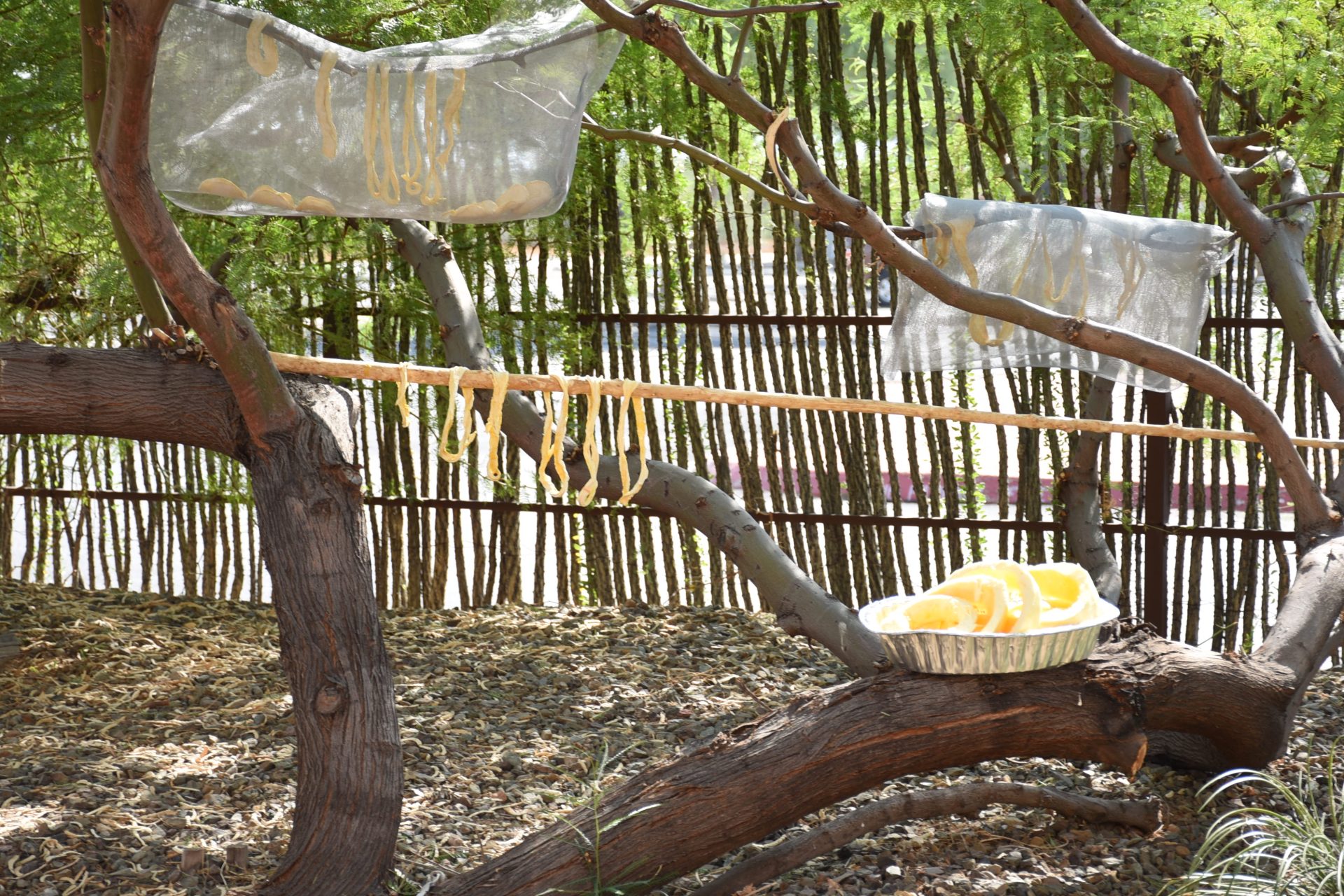
Butler had the slices, which were cut into large rings, laid out on a stick that was resting between the trunks of two trees. The squash slices stay hanging on the stick for about two days before being checked on.
“Once you get it smooth, you slice it all up,” said Butler.
Butler highlighted the need to save a few of the squash seeds for your seed bank. “Set some [seeds] aside for your garden for the next season and give some to people who you love,” said Butler.
Butler said that, traditionally, some of the seeds would be harvested for consumption, usually eaten during winter storytelling time, kind of like popcorn.
“We would always look forward to enjoying those winter stories and those winter snacks,” said Butler.
The fresh squash can be cut up, diced and added to a stew or seasoned and eaten as is.
“We want the youth and this generation to learn about how healthy the people were back before the settlers came and [dammed the rivers],” said Butler. “A long time ago, we used to be some of the healthiest people on Earth. Now, our people have the highest rate of diabetes.”
